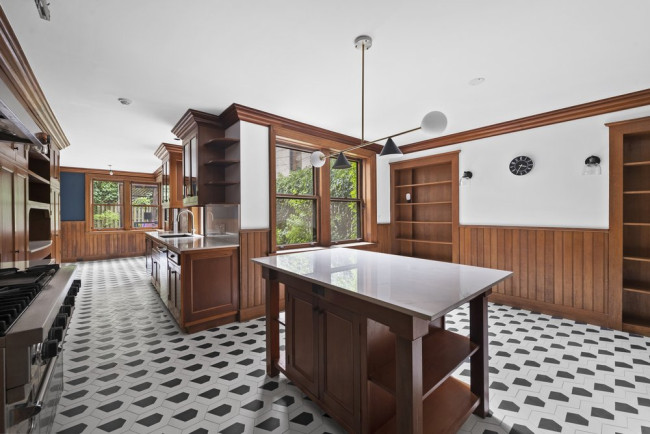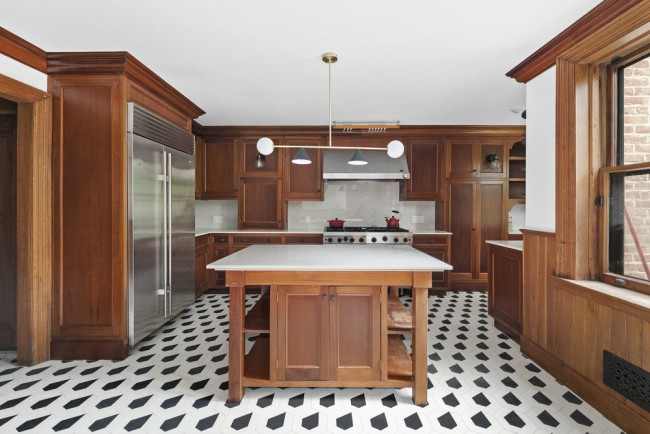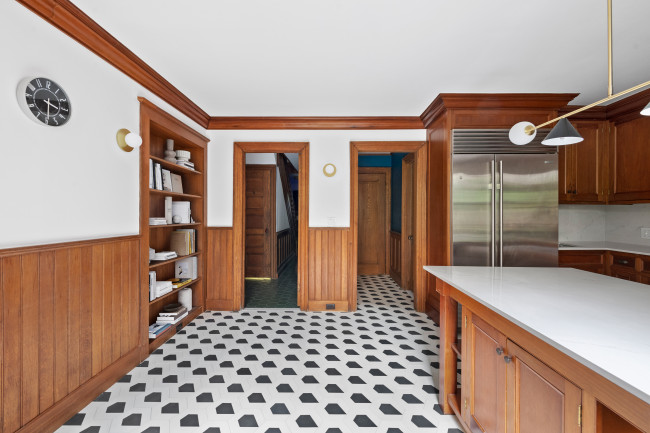Upgrades that will protect your NYC brownstone from extreme weather
- Add waterproof coatings and sealants on walls and floors to prevent basement flooding
- Improve drainage by installing a sump pump and maintaining your gutters and downspouts
- Raise HVAC systems, electrical panels, and other utilities above the base flood elevation
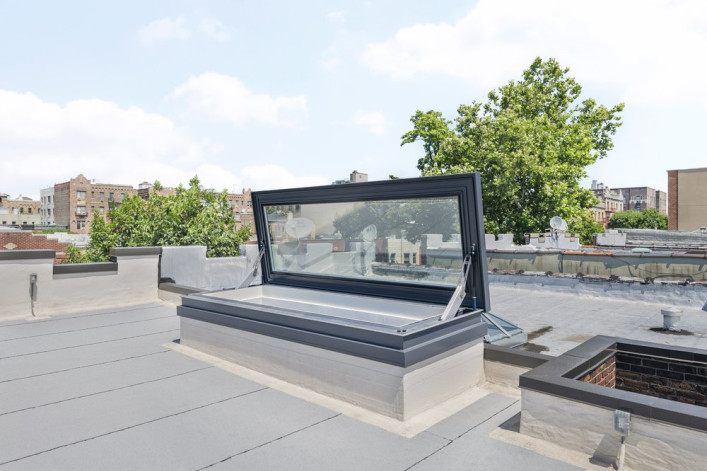
An upgraded roof in Astoria Queens: An old roof is one of the biggest areas of concern, so it's important to work with an experienced professional.
Bolster
Protecting your New York City brownstone against increasingly common extreme weather events and climate change-related damage, including flooding, hurricanes, and intense rainstorms, is crucial for the safety and resilience of your property.
Bolster, a data-driven design-build firm with more than a decade of experience in the high-end renovation sector in NYC, has seen a recent increase in requests for renovations that include improvements to make brownstones weather-safe. Consulting with architects, engineers, and contractors who have experience in climate resilience and renovating in flood-prone areas is important, as they can assess your property and recommend appropriate measures.
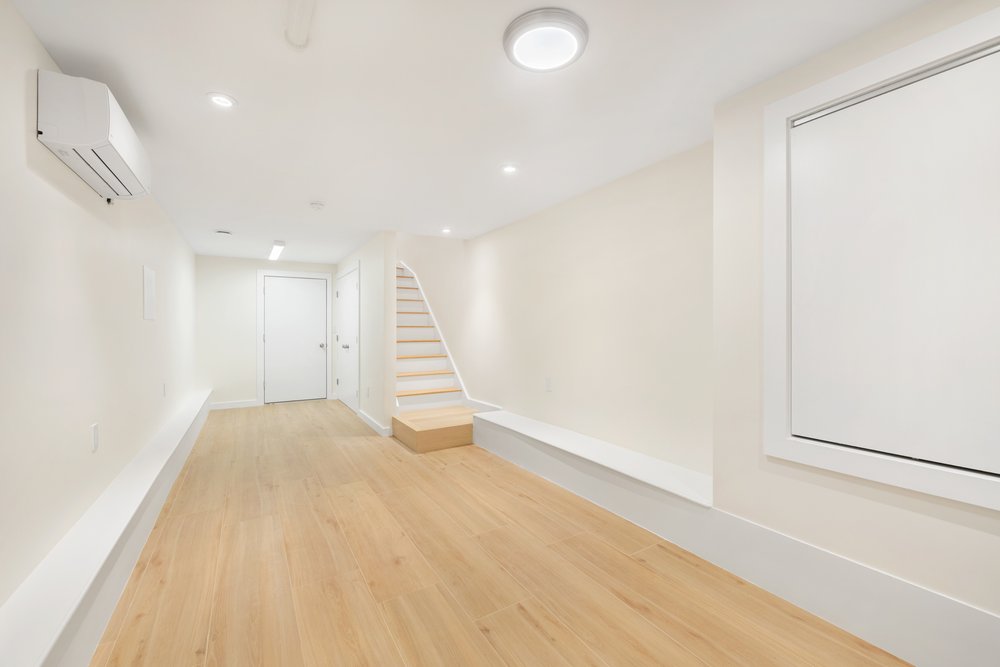
Address issues from the ground up
One of the most important things you can do is ensure your basement is properly sealed to prevent water infiltration. Using waterproof coatings and sealants on walls and floors can significantly reduce the risk of basement flooding. You can also improve drainage by installing a sump pump in your basement to remove excess water quickly during periods of heavy rainfall or flooding. You should ensure that your property's drainage systems, gutters, and downspouts are well-maintained and functioning properly.
Elevating your utilities on the ground level and lower floors can also minimize risk. If possible, raise your HVAC systems, electrical panels, and other utilities above the base flood elevation to prevent further damage during potential floods. You should also consider installing backflow valves in your sewer system to prevent backup.
Did you know that your landscaping choices can also impact your weather-related damage risks? Leveling a sloping yard, selecting plants native to the area to prevent erosion, and planting a rain garden can help safeguard your home’s envelope. A rain barrel, which connects directly to your home’s downspout or gutter to capture and store rain, is another eco-friendly way to amplify the impact of your flood-proofing efforts. Not only can this save you money, it’s also good for the environment by decreasing pollution runoff into natural waterways.
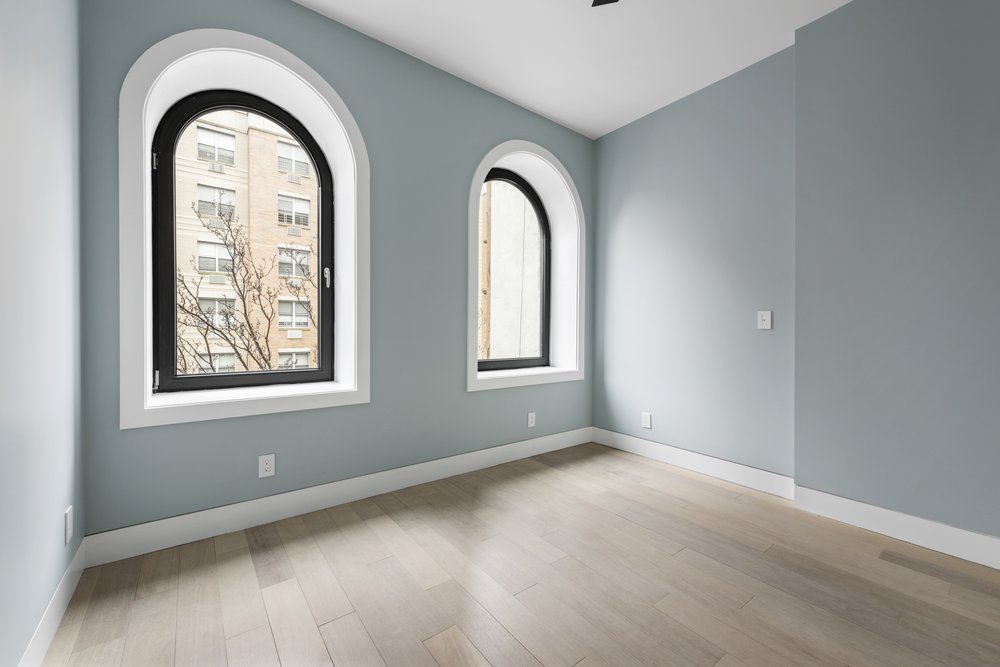
Reinforce your envelope
Perhaps one of the biggest areas of concern is an old roof, which is magnified in the rainy seasons of fall and spring. Many homes across the U.S. suffer from the consequences of bad roofing. Contrary to popular belief, leaks are not only caused by subpar roofs—they can also be caused by old facades and decaying walls, which, if they have cracks, can compound the problem.
The best way to avoid leaks and water infiltration is to invest in a good roofer and figure out where the water is pooling and why. A roofer will be able to give you suggestions on how to make changes to the roof—big or small.
In some instances, roofs require big fixes, for example, if they are sagging or were not designed property from the start, or if they have been patched many times by different roofers. Note that any worthwhile roofer will guarantee their roof for up to 12 years, provided they are the only one who has done work on the roof.
You should also understand where the gutters are positioned and where they drain to, and review that the downspouts are positioned in a way in which water flows away from the property and has an area to drain freely.
Lastly, it’s worth noting that it’s important to ensure the entire envelope of the property is sealed, not just the roof. Installing impact-resistant windows and doors is crucial to protect against wind and debris during strong winds. You can also retrofit your property for wind resistance by reinforcing load-bearing walls.
Climate change adaptation is an ongoing process, and it's essential to continuously assess and update your protective measures to stay ahead of evolving risks. Beyond renovating your home with extreme weather events in mind, here are a few non-renovation related things you can do to mitigate your risk:
- Purchase flood insurance and a comprehensive homeowners' insurance policy that covers hurricane and storm damage. Review the policies to understand the coverage and deductibles.
- Stay informed and up to date on weather forecasts and warnings. Sign up for local alerts and consider investing in a weather monitoring system for your property.
- Collaborate with your neighbors to implement community-based resilience initiatives, such as rain gardens and permeable pavement, which can help reduce local flooding.
- Look into local government agencies and organizations that offer resources and guidance to help you protect your property against climate change-related damage.
You Might Also Like

















